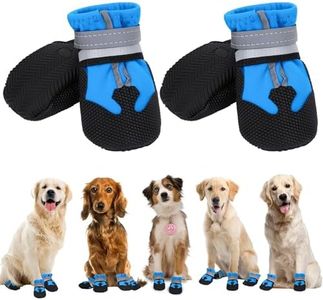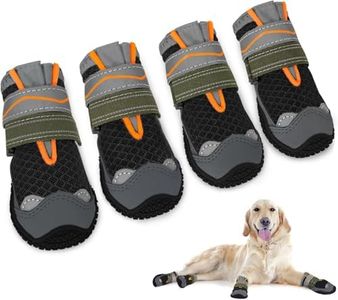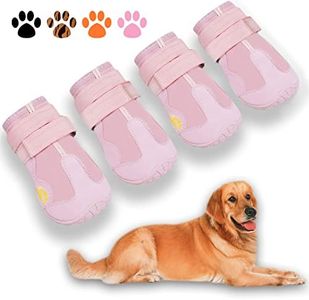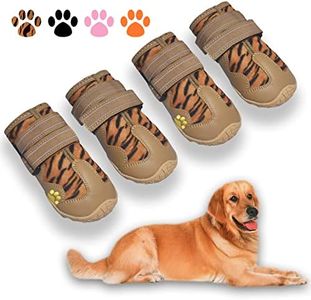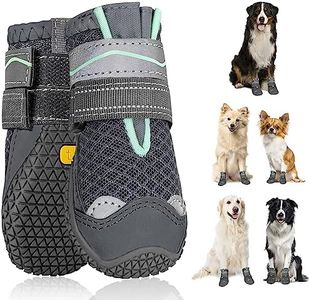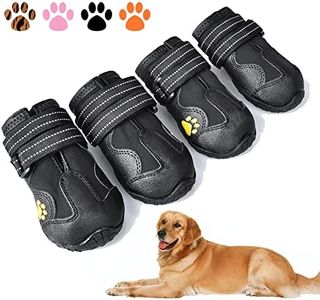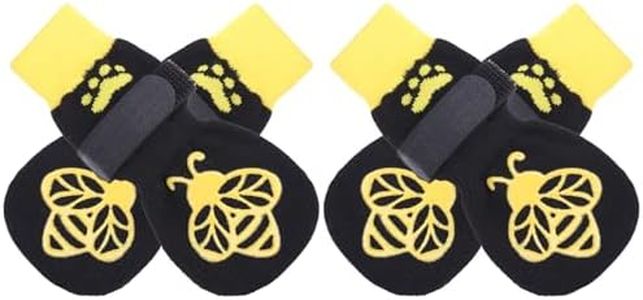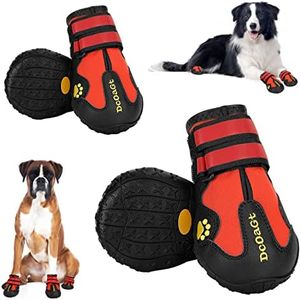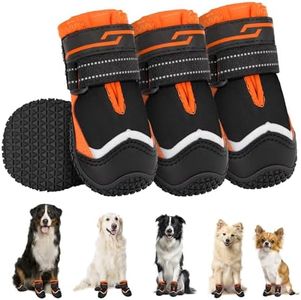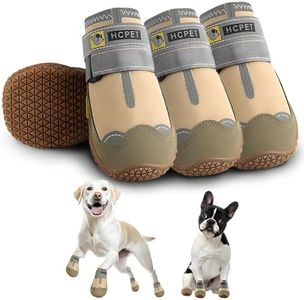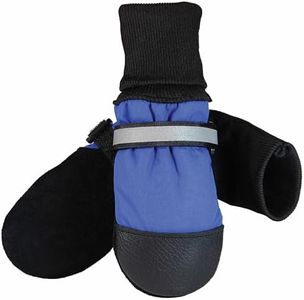We Use CookiesWe use cookies to enhance the security, performance,
functionality and for analytical and promotional activities. By continuing to browse this site you
are agreeing to our privacy policy
10 Best Dog Shoes
From leading brands and best sellers available on the web.Buying Guide for the Best Dog Shoes
When it comes to buying dog shoes, the ultimate goal is to ensure your pup’s comfort and protection. Whether you need them for hot pavements, cold winters, or rugged hiking trails, it’s important to consider your dog’s needs and daily activities. By understanding a few key features, you’ll be able to choose shoes that fit well, last long, and help your dog move naturally.Size and FitSize and fit are crucial for your dog's shoes because poorly fitted shoes can cause discomfort, limping, or even injury. Dog shoes come in various sizes, so measuring your dog’s paws (width and length) is essential for a proper fit. Shoes that are too tight might rub and cause blisters, while ones that are too loose may fall off easily. Choosing the right fit usually means looking for snug, but not tight, shoes. Active dogs, or dogs who will wear shoes for longer periods, especially need a secure fit to prevent slipping and tripping.
MaterialMaterials used for dog shoes affect comfort, durability, and the environments for which the shoes are best suited. Common materials include breathable mesh, sturdy rubber, or waterproof fabrics. Breathable options are best for warm weather and daily walks, allowing moisture to escape and keeping paws cool. Waterproof and insulated materials are ideal for rainy or snowy conditions, while rubber soles provide protection against rough terrain. Consider where and when your dog will wear the shoes — for example, rugged hikes require tough soles, while city pavements need lighter materials.
Closure TypeClosure type refers to how the shoes are secured on your dog’s paws, such as with Velcro straps, buckles, or zippers. Secure closures prevent shoes from slipping off during activity. Velcro closures are common and easy to use, ideal for quickly putting shoes on or off. Buckles and zippers can offer a tighter fit but might take longer to fasten. For energetic or very active dogs, a combination of closures can deliver better security. Always choose a closure that stays in place but doesn’t pinch or restrict your dog’s movement.
Traction and TreadTraction and tread describe the grip offered by the shoe’s soles. Shoes with textured, rubber treads are great for slippery or rough surfaces, helping your dog maintain stability and avoid falls. Shoes intended for ice or snow usually have a more rugged sole, while indoor or mild-weather shoes can be smoother. If your dog will wear shoes outdoors, pay attention to tread patterns and material. Choose deeper, more patterned treads for hiking or winter walks; for urban walks or indoors, a simpler tread will do.
Weight and FlexibilityWeight and flexibility influence how natural the shoes feel for your dog. Lighter, more flexible shoes are generally better for dogs new to footwear, as they imitate the natural movement of their paws and cause less interference with walking. Heavy or stiff shoes can protect paws in harsh conditions but may take longer for a dog to get used to. Consider how long your dog will be wearing the shoes, and their activity level. For brief or casual use, or for shoe beginners, choose lightweight and flexible options. For protection in demanding environments, look for a balance of durability and flexibility.
Water ResistanceWater resistance is important if your dog will be walking in wet grass, puddles, snow, or rain. Water-resistant shoes keep your dog’s paws dry and warm, preventing discomfort or cold-related injuries. Some shoes are fully waterproof, while others only resist light moisture. Picking the right level of water resistance depends on your climate and needs. For regular urban strolls where you might encounter occasional puddles, basic water resistance works fine. In heavy rain, snow, or for outdoor adventures, fully waterproof shoes are preferable.
